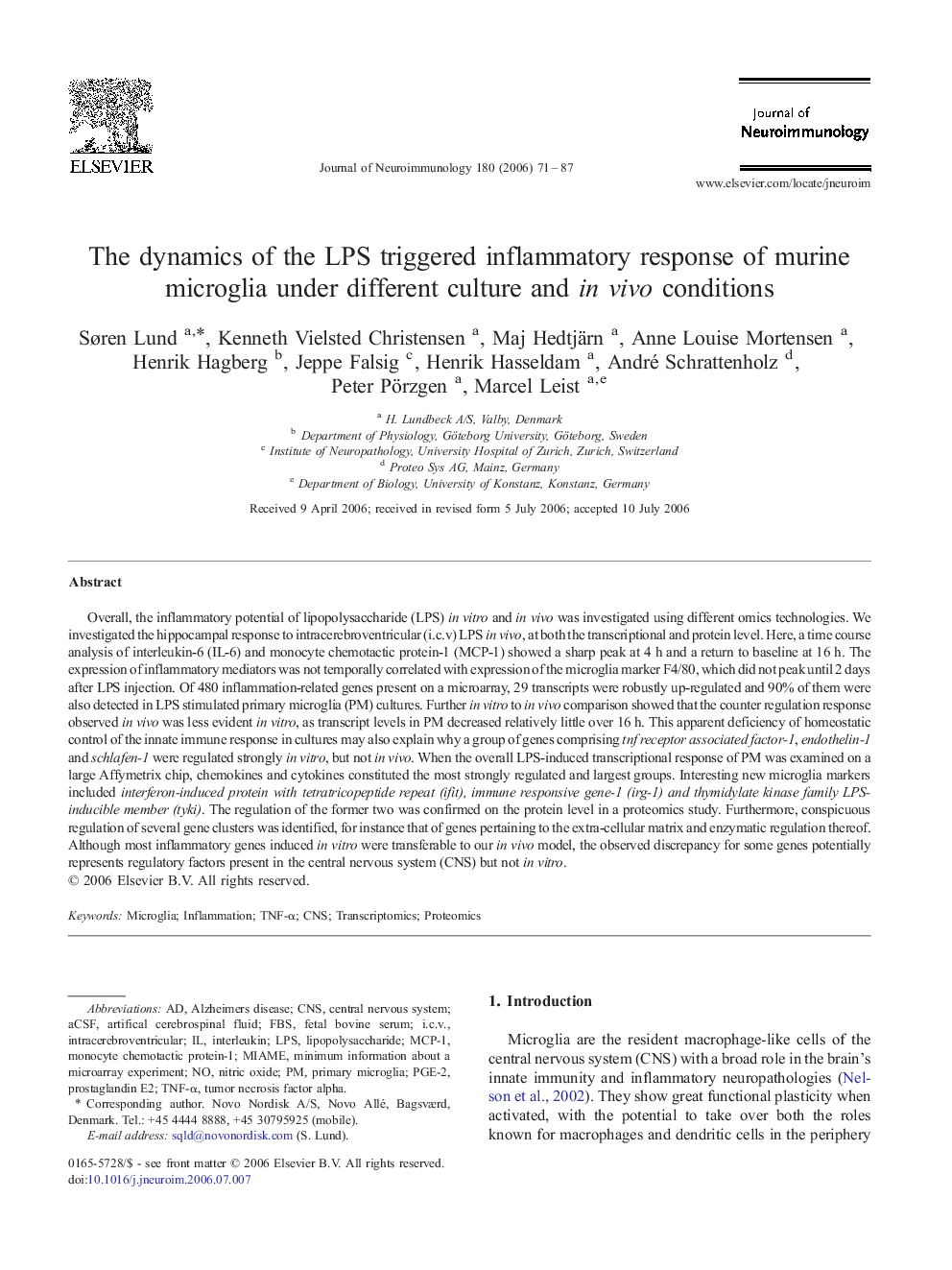| کد مقاله | کد نشریه | سال انتشار | مقاله انگلیسی | نسخه تمام متن |
|---|---|---|---|---|
| 3065441 | 1580490 | 2006 | 17 صفحه PDF | دانلود رایگان |

Overall, the inflammatory potential of lipopolysaccharide (LPS) in vitro and in vivo was investigated using different omics technologies. We investigated the hippocampal response to intracerebroventricular (i.c.v) LPS in vivo, at both the transcriptional and protein level. Here, a time course analysis of interleukin-6 (IL-6) and monocyte chemotactic protein-1 (MCP-1) showed a sharp peak at 4 h and a return to baseline at 16 h. The expression of inflammatory mediators was not temporally correlated with expression of the microglia marker F4/80, which did not peak until 2 days after LPS injection. Of 480 inflammation-related genes present on a microarray, 29 transcripts were robustly up-regulated and 90% of them were also detected in LPS stimulated primary microglia (PM) cultures. Further in vitro to in vivo comparison showed that the counter regulation response observed in vivo was less evident in vitro, as transcript levels in PM decreased relatively little over 16 h. This apparent deficiency of homeostatic control of the innate immune response in cultures may also explain why a group of genes comprising tnf receptor associated factor-1, endothelin-1 and schlafen-1 were regulated strongly in vitro, but not in vivo. When the overall LPS-induced transcriptional response of PM was examined on a large Affymetrix chip, chemokines and cytokines constituted the most strongly regulated and largest groups. Interesting new microglia markers included interferon-induced protein with tetratricopeptide repeat (ifit), immune responsive gene-1 (irg-1) and thymidylate kinase family LPS-inducible member (tyki). The regulation of the former two was confirmed on the protein level in a proteomics study. Furthermore, conspicuous regulation of several gene clusters was identified, for instance that of genes pertaining to the extra-cellular matrix and enzymatic regulation thereof. Although most inflammatory genes induced in vitro were transferable to our in vivo model, the observed discrepancy for some genes potentially represents regulatory factors present in the central nervous system (CNS) but not in vitro.
Journal: Journal of Neuroimmunology - Volume 180, Issues 1–2, November 2006, Pages 71–87